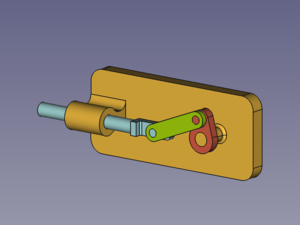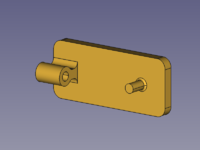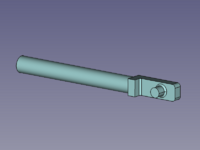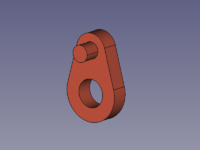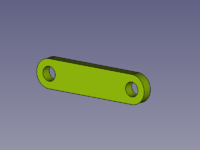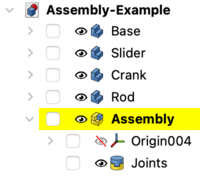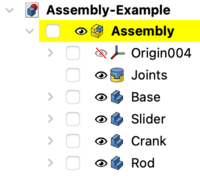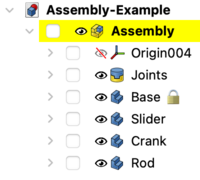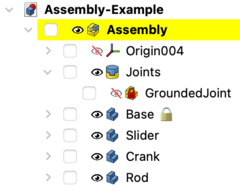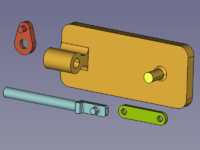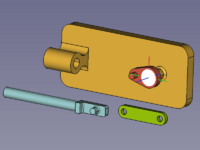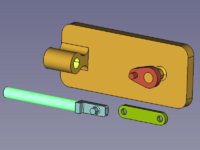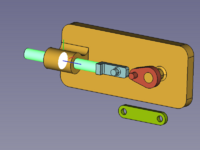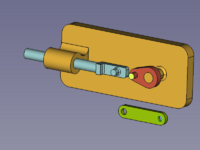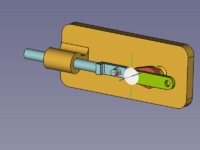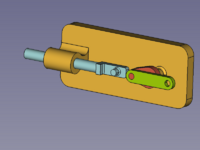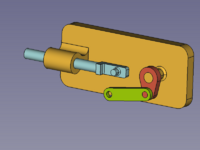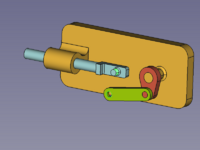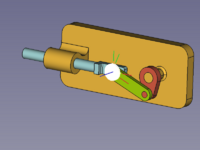Assembly Workbench/pl: Difference between revisions
(Updating to match new version of source page) |
(Created page with "16px Utwórz złożenie dodaje do dokumentu złożenie główne. ''(narzędzie to może również dodać podzespół do istniejącego wybranego złożenia)''") |
||
| (17 intermediate revisions by the same user not shown) | |||
| Line 20: | Line 20: | ||
<span id="Tools"></span> |
<span id="Tools"></span> |
||
<div class="mw-translate-fuzzy"> |
|||
==Narzędzia== |
==Narzędzia== |
||
</div> |
|||
Funkcje eksperymentalne nie są domyślnie dostępne. Aby je włączyć, zapoznaj się z informacjami na stronie [[Fine-tuning/pl#środowisko_pracy_Złożenie|Dostrajanie parametrów]]. |
|||
<div lang="en" dir="ltr" class="mw-content-ltr"> |
|||
Experimental features are not available by default. To enable them see [[Fine-tuning#Assembly_Workbench|Fine-tuning]]. |
|||
</div> |
|||
<span id="Assembly"></span> |
|||
<div lang="en" dir="ltr" class="mw-content-ltr"> |
|||
=== |
===Złożenie=== |
||
</div> |
|||
* [[Image:Assembly_CreateAssembly.svg|32px]] [[Assembly_CreateAssembly/pl|Utwórz złożenie]] |
* [[Image:Assembly_CreateAssembly.svg|32px]] [[Assembly_CreateAssembly/pl|Utwórz złożenie]] |
||
| Line 38: | Line 33: | ||
* [[Image:Assembly_SolveAssembly.svg|32px]] [[Assembly_SolveAssembly/pl|Rozwiązywanie złożeń]] |
* [[Image:Assembly_SolveAssembly.svg|32px]] [[Assembly_SolveAssembly/pl|Rozwiązywanie złożeń]] |
||
| ⚫ | |||
<div lang="en" dir="ltr" class="mw-content-ltr"> |
|||
| ⚫ | |||
</div> |
|||
* [[Image:Assembly_ExportASMT.svg|32px]] [[Assembly_ExportASMT/pl|Eksport pliku ASMT]] |
* [[Image:Assembly_ExportASMT.svg|32px]] [[Assembly_ExportASMT/pl|Eksport pliku ASMT]] |
||
<span id="Joints"></span> |
|||
<div lang="en" dir="ltr" class="mw-content-ltr"> |
|||
=== |
===Połączenia=== |
||
</div> |
|||
* [[Image:Assembly_ToggleGrounded.svg|32px]] [[Assembly_ToggleGrounded/pl|Przełącz zakotwienie]] |
* [[Image:Assembly_ToggleGrounded.svg|32px]] [[Assembly_ToggleGrounded/pl|Przełącz zakotwienie]] |
||
| Line 62: | Line 54: | ||
* [[Image:Assembly_CreateJointDistance.svg|32px]] [[Assembly_CreateJointDistance/pl|Utwórz połączenie dystansowe]] |
* [[Image:Assembly_CreateJointDistance.svg|32px]] [[Assembly_CreateJointDistance/pl|Utwórz połączenie dystansowe]] |
||
| ⚫ | |||
<div lang="en" dir="ltr" class="mw-content-ltr"> |
|||
| ⚫ | |||
</div> |
|||
| ⚫ | |||
<div lang="en" dir="ltr" class="mw-content-ltr"> |
|||
| ⚫ | |||
</div> |
|||
| ⚫ | |||
<div lang="en" dir="ltr" class="mw-content-ltr"> |
|||
| ⚫ | |||
</div> |
|||
| ⚫ | |||
<div lang="en" dir="ltr" class="mw-content-ltr"> |
|||
| ⚫ | |||
</div> |
|||
| ⚫ | |||
<div lang="en" dir="ltr" class="mw-content-ltr"> |
|||
| ⚫ | |||
</div> |
|||
<span id="Example"></span> |
|||
<div lang="en" dir="ltr" class="mw-content-ltr"> |
|||
== |
==Przykład== |
||
</div> |
|||
<div lang="en" dir="ltr" class="mw-content-ltr"> |
|||
<div class="mw-collapsible mw-collapsed toccolours"> |
<div class="mw-collapsible mw-collapsed toccolours"> |
||
[[Image:Assembly3_KinematicExample-01.png|80px]] |
[[Image:Assembly3_KinematicExample-01.png|80px]] Ten przykład jest tymczasowy i może zostać usunięty, gdy dostępne będą odpowiednie opisy / poradniki. |
||
<div class="mw-collapsible-content"> |
<div class="mw-collapsible-content"> |
||
</div> |
|||
<span id="A_kinematic_assembly"></span> |
|||
<div lang="en" dir="ltr" class="mw-content-ltr"> |
|||
===Złożenie kinematyczne=== |
|||
===A kinematic assembly=== |
|||
</div> |
|||
Zespół kinematyczny, który ma zostać utworzony, składa się z czterech części: podstawy, suwaka, korby i pręta łączącego. Są one połączone czterema przegubami. |
|||
<div lang="en" dir="ltr" class="mw-content-ltr"> |
|||
The kinematic assembly to be created consists of four parts: a Base, a Slider, a Crank, and a connecting Rod. They are connected with four joints. |
|||
</div> |
|||
[[Image:Assembly3_KinematicExample-01.png|300px]] |
[[Image:Assembly3_KinematicExample-01.png|300px]] |
||
{{Caption|Złożone części: Podstawa ''(bursztynowy)'', Suwak ''(jasnoniebieski)'', Korba ''(czerwony)'', Korbowód ''(zielony)''}} |
|||
<div lang="en" dir="ltr" class="mw-content-ltr"> |
|||
{{Caption|Assembled parts: Base (amber), Slider (light blue), Crank (red), connecting Rod (green)}} |
|||
</div> |
|||
<span id="Prepare_parts"></span> |
|||
<div lang="en" dir="ltr" class="mw-content-ltr"> |
|||
==== |
====Przygotowanie części==== |
||
</div> |
|||
W tym przykładzie wszystkie części i zespół są tworzone w jednym dokumencie. |
|||
<div lang="en" dir="ltr" class="mw-content-ltr"> |
|||
In this example all parts and the assembly are created in one document. |
|||
</div> |
|||
[[Image:Assembly3_KinematicExample-02.png|200px]] |
[[Image:Assembly3_KinematicExample-02.png|200px]] |
||
| Line 131: | Line 102: | ||
</div> |
</div> |
||
[[Image:Assembly_CreateAssembly.svg|16px]] [[Assembly_CreateAssembly/pl|Utwórz złożenie]] dodaje do dokumentu złożenie główne. ''(narzędzie to może również dodać podzespół do istniejącego wybranego złożenia)'' |
|||
<div lang="en" dir="ltr" class="mw-content-ltr"> |
|||
[[Image:Assembly_CreateAssembly.svg|16px]] [[Assembly_CreateAssembly|Create Assembly]] adds a root assembly to a document. (this tool can also add a sub-assembly to an existing selected assembly) |
|||
</div> |
|||
[[Image:Assembly_KinematicExample-01.png|200px]] |
[[Image:Assembly_KinematicExample-01.png|200px]] |
||
Revision as of 16:20, 23 May 2024

Wprowadzenie
Środowisko pracy Złożenie to nowe wbudowane środowisko pracy FreeCAD.
Narzędzia
Funkcje eksperymentalne nie są domyślnie dostępne. Aby je włączyć, zapoznaj się z informacjami na stronie Dostrajanie parametrów.
Złożenie
Połączenia
Przykład
 Ten przykład jest tymczasowy i może zostać usunięty, gdy dostępne będą odpowiednie opisy / poradniki.
Ten przykład jest tymczasowy i może zostać usunięty, gdy dostępne będą odpowiednie opisy / poradniki.
Złożenie kinematyczne
Zespół kinematyczny, który ma zostać utworzony, składa się z czterech części: podstawy, suwaka, korby i pręta łączącego. Są one połączone czterema przegubami.
Złożone części: Podstawa (bursztynowy), Suwak (jasnoniebieski), Korba (czerwony), Korbowód (zielony)
Przygotowanie części
W tym przykładzie wszystkie części i zespół są tworzone w jednym dokumencie.
From left to right: Base, Slider, Crank, connecting Rod
Cylindrical geometries are either parallel or perpendicular, the rest of the shapes is not relevant for this example unless it causes clashes. With this in mind model your own shapes.
Add a root assembly
Utwórz złożenie dodaje do dokumentu złożenie główne. (narzędzie to może również dodać podzespół do istniejącego wybranego złożenia)
Tree view of Parts and Assembly in a document
Move the parts into the assembly container
In the Tree view drag and drop the parts on the Assembly object. Now they can be handled by the Assembly's solver.
The Parts are in the Assembly container now
Ground a part
To keep the assembly at the desired position, the base part should be locked, or grounded as it is called here. Select the Base in the Tree view or in the 3D view and use the Toggle grounded command. This fixes the position of the Base in relation to the local coordinate system (LCS) of the Assembly container. This (also suffixes a lock icon to the label of the Base object and (before weekly build 0.22 - 37213)) adds a GroundedJoint object in the Joints container.
Expand the Joints container to find the GroundedJoint object
(The GroundedJoint object cannot be unhidden and has no representation in the 3D view (before weekly build 0.22 - 37213))
Apply joints
A joint connects exactly two elements of different parts. They can optionally be selected before the desired joint tool is invoked (any number of selected elements other than two results in an empty selection).
The elements define the position and orientation of a LCS represented by a filled circle on the local XY plane and three lines along the local X (red), Y (green), and Z (blue) axes.
- A Revolute joint between Base and Crank
Selected elements + Create Revolute Joint → rearranged Crank
- A Cylindrical joint between Base and Slider
Selected elements + Create Cylindrical Joint → rearranged Slider
- A Revolute joint between Crank and Rod
Selected elements + Create Revolute Joint → rearranged Rod
Now there are several joints in a line and we have to help the solver to find a sensible solution.
Click and drag the parts → into an easier to compute position.
- A Cylindrical joint between Rod and Slider
Selected elements + Create Cylindrical Joint → finished Assembly
In the finished assembly use the mouse pointer to drag the parts according to the used joints.
Drive the crank
To control the layout of the assembly by the angle between the Base and the Crank we have to change the Revolute joint to a Fixed joint.
To do so double-click on the Revolute object in the Tree view. In the dialog change Revolute to Fixed and change the Rotation value as desired (the movement should follow the mouse wheel action).
Now only the Label of the joint was changed but not its Name! (Each change of the joint type will also change the Label)
The Rotation property of the Fixed joint can be controlled via macro or from the python console (just copy and paste the following lines):
actuator = FreeCAD.ActiveDocument.getObject('Revolute')
for angle in range(0,361,10):
# A full rotation of the Crank in steps of 10°
actuator.Rotation = angle
App.activeDocument().recompute(None,True,True)
Or alternatively:
actuator = FreeCAD.ActiveDocument.getObject('Revolute')
for angle in range(0,361,10):
# A full rotation of the Crank in steps of 10°
actuator.Rotation = angle
Gui.runCommand('Assembly_SolveAssembly',0)
(The Name of the joint is still Revolute while its Label has changed to Fixed, and the end of the range must be greater than 360 to also include this angle as a valid result.)
- Złożenie: Utwórz złożenie, Wstaw łącze, Rozwiąż złożenie, Utwórz widok rozłożenia, Eksportuj do pliku ASMT
- Połaczenia: Włącz / wyłącz zakotwienie, Utwórz połączenie stałe, Utwórz połączenie obrotowe, Utwórz połączenie cylindryczne, Utwórz połączenie przesuwne, Utwórz przegub kulowy, Utwórz połączenie dystansowe, Utwórz połączenie zębatki i koła zębatego, Utwórz połączenie śrubowe, Utwórz połączenie kół zębatych, Utwórz połączenie pasowe
- Jak zacząć
- Instalacja: Pobieranie programu, Windows, Linux, Mac, Dodatkowych komponentów, Docker, AppImage, Ubuntu Snap
- Podstawy: Informacje na temat FreeCAD, Interfejs użytkownika, Profil nawigacji myszką, Metody wyboru, Nazwa obiektu, Edytor ustawień, Środowiska pracy, Struktura dokumentu, Właściwości, Pomóż w rozwoju FreeCAD, Dotacje
- Pomoc: Poradniki, Wideo poradniki
- Środowiska pracy: Strona Startowa, Złożenie, BIM, CAM, Rysunek Roboczy, MES, Inspekcja, Siatka, OpenSCAD, Część, Projekt Części, Punkty, Inżynieria Wsteczna, Robot, Szkicownik, Arkusz Kalkulacyjny, Powierzchnia 3D, Rysunek Techniczny, Test Framework


